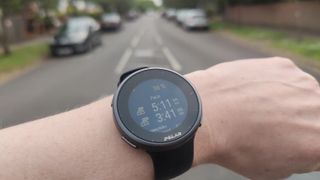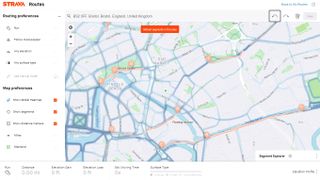I’m a runner, and I’ve just joined Strava. I regret it
Running used to be a pleasure. Now, it’s a race

Whether it’s a lunchtime 5K or a half-marathon event, I’ve always considered running a pleasure. For me, running is not an intense burst of competition: I run while listening to podcasts or audiobooks rather than music, and I frequently stop and stretch halfway through a training run if I can find a nice spot.
Don’t get me wrong: I love lifting heavy, but an hour’s run has a different kind of therapeutic effect than a session at my local basement gym, especially when the sun’s out. Running is a source of stress relief, an escape from the notifications and blue light sources that are constantly encroaching on my life.
Give me a pair of the best running shoes and running headphones I can find, and a straight road, preferably by a river, and I’m usually at my happiest.
But as TechRadar’s new fitness and wellbeing editor I’ve been changing up my workouts to be less holistic and more analytical, or data-driven, and one of the easiest ways to share all this data is via Strava, the social network for athletes.
As well as enabling you to log and share your runs, rides, swims and other workouts, Strava functions such as Group Challenges can be extremely beneficial when it comes to encouraging people to work out. Researchers from Flinders University in Australia, who examined almost 1,500 active adults, found that receiving in-app encouragement from, and offering it to, close friends was linked to increased participation in exercise.

As a late adopter with lots of friends already on the network, I was curious to see if Strava could take my training to the next level. Dutifully, I signed up, plugged my Strava details into my Polar Flow app to sync my activities, and set about adding my friends.
I use the Polar Vantage V2 as my everyday watch of choice, but the best Garmin watches, Fitbits, AmazFit sports watches, and pretty much any big-brand fitness tracker will also allow you to sync your data with the network. None of this is news for experienced Strava users, but for newcomers, it’s good to know that the app’s functionality spans a wide range of devices.
Get daily insight, inspiration and deals in your inbox
Get the hottest deals available in your inbox plus news, reviews, opinion, analysis and more from the TechRadar team.
Every run is now a race
Soon enough, my home timeline was filled with runs, cycles, surf sessions, and other workouts from my friends, and I got an invite to a group of buddies to share our stats in ‘friendly’ competition.
This is where my workouts began to change. Strava is best used for outdoor exercise, as you see GPS maps of your routes (with speeds for each segment) alongside your pace, calorie burn, and photos taken on the way. Although I like to take things slow, I’m a competitive person at heart, and that lazy evening 5K riverside run quickly turned into a pretty savage 10K, as I began to think a gentle jog wasn’t exactly worthy of any ‘Kudos’ (Strava’s version of the Like or Upvote button).
I also briefly considered canceling my yoga class the following evening for another demanding run, just so I could continue clocking up the miles in order to keep up with the pack.
From Strava’s perspective, gamifying running in the same way other social media sites have gamified the rest of our lives is a stroke of genius – it’s just as addictive seeing those Kudos notifications roll in as it is to see yourself retweeted. For the user, it’s not all bad: it’s a bit of fun, and this gamification is a proven way to encourage people to exercise more, according to research published in the journal Frontiers in Computer Science.
However, I now feel that every time I run, I’m being watched. My Polar isn’t just a passive observer anymore, quietly recording my stats, other than chirping after every kilometer; it’s now a lens through which my Strava community is spying on me, to make sure I’m running enough miles or not taking breaks. It’s the classic observer’s paradox phenomenon in full effect: I’m running harder and faster because I know people will see the end result.
It’s going to be great for my cardio, but perhaps not so much for my mental health. So every once in a while I’m going to take my colleague Tom Bedford’s advice, ditch my smartwatch and return to a more holistic running experience.

Matt is TechRadar's expert on all things fitness, wellness and wearable tech. A former staffer at Men's Health, he holds a Master's Degree in journalism from Cardiff and has written for brands like Runner's World, Women's Health, Men's Fitness, LiveScience and Fit&Well on everything fitness tech, exercise, nutrition and mental wellbeing.
Matt's a keen runner, ex-kickboxer, not averse to the odd yoga flow, and insists everyone should stretch every morning. When he’s not training or writing about health and fitness, he can be found reading doorstop-thick fantasy books with lots of fictional maps in them.
Most Popular


